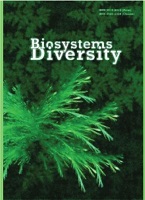The effect on the organism of rats of adding Helichrysum arenarium inflorescences to a hypercaloric diet, high in sugar and fat
The effect on the organism of rats of adding Helichrysum arenarium inflorescences to a hypercaloric diet, high in sugar and fat
Author(s): M. A. Lieshchova, V. V. BrygadyrenkoSubject(s): Health and medicine and law, Environmental interactions
Published by: Дніпропетровський національний університет імені Олеся Гончара
Keywords: relative mass of organs; increase in body weight; high-fat diet; phytotherapy; obesity correction;
Summary/Abstract: Obesity increases the risk of developing various pathological conditions such as metabolic syndrome, type 2 diabetes, non-alcoholic fatty liver disease, and cardiovascular disease. For mild correction and even treatment of obesity, drugs based on medicinal plants are increasingly being used. This work aims to determine the overall effect of Helichrysum arenariuminflorescences on physiological activity and metabolic processes in model animals fed a diet rich in fat and carbohydrates. In a 27-day experiment on 18 laboratory rats fed a diet with high-fat content and 20% fructose solution, we determined the effect of 0.4% and 4.0% dry inflorescences of H. arenarium from the feed mass on the animals' physiological activity and metabolic processes. The body weight of rats in the control group reached 121.7% of the initial body weight; when consuming 0.4% and 4.0% H. arenariumin the diet, this indicator was lower – 109.6% and 111.2%, respectively. Dry inflorescences of H. arenariumin the rats’ diet at a dose of 0.4% caused a decrease in the relative mass of the heart and thymus and an increase in the relative mass ofthe caecum and colon. A diet with the addition of H. arenariumcaused a change in blood biochemical parameters: an increase in the urea concentration and urea nitrogen, and a decrease in the glucose concentration and protein coefficient. Helichrysum arenarium at both concentrations significantly increased the gamma-glutamyltransferase and alkaline phosphatase activity with a decrease in alpha-amylase activity in the blood. A 0.4% dose of inflorescences of the food mass caused a decrease in AST activity, and 200 g sharply increased blood ALT activity. The consumption of dried H. arenarium inflorescences decreased hematocrit, haemoglobin concentration, erythrocyte and platelet counts, and increased the percentage of eosinophils and monocytes. A decrease in physical activity and an intensification of emotional state were found in the animals after eating dry inflorescences of H. arenarium, regardless of the dose compared with the control group of animals. Significant changes in the orientation activity of the animals were not observed. The obtained results show that adding dry H. arenarium inflorescences as a food supplement to a high-calorie diet is safe, does not cause pathological changes and side effects, and significantly affects metabolic processes. This provides theoretical support for the use of dried H. arenarium inflorescences for the production of nutraceutical and pharmacological products for the correction of metabolic disorders in humans and animals. The doses and duration of their use require further research.
Journal: Biosystems Diversity
- Issue Year: 31/2023
- Issue No: 3
- Page Range: 350-357
- Page Count: 8
- Language: English

